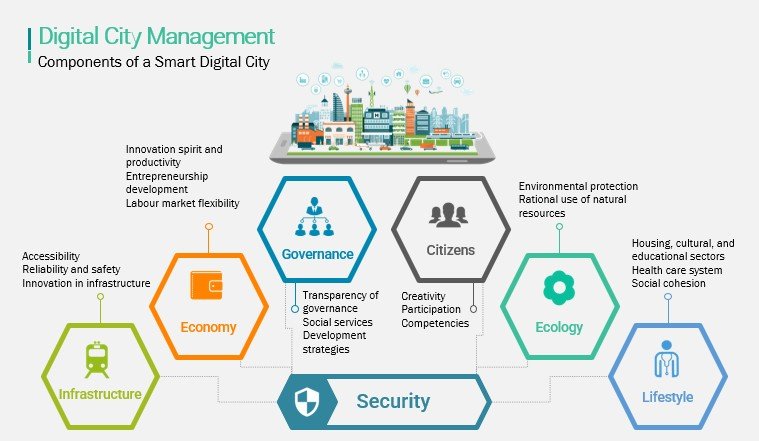🧩 Visual Frameworks & Illustrations
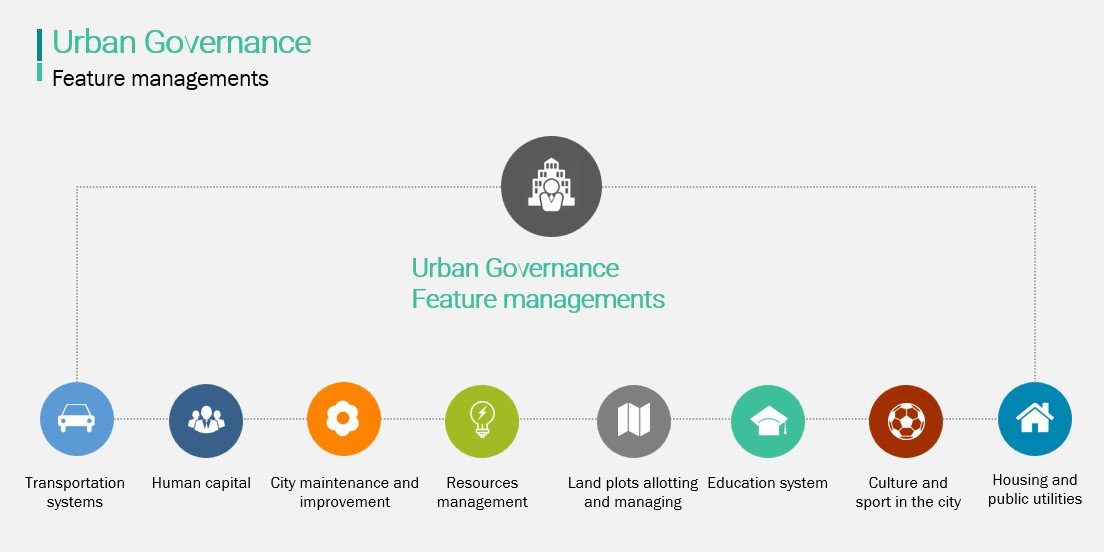
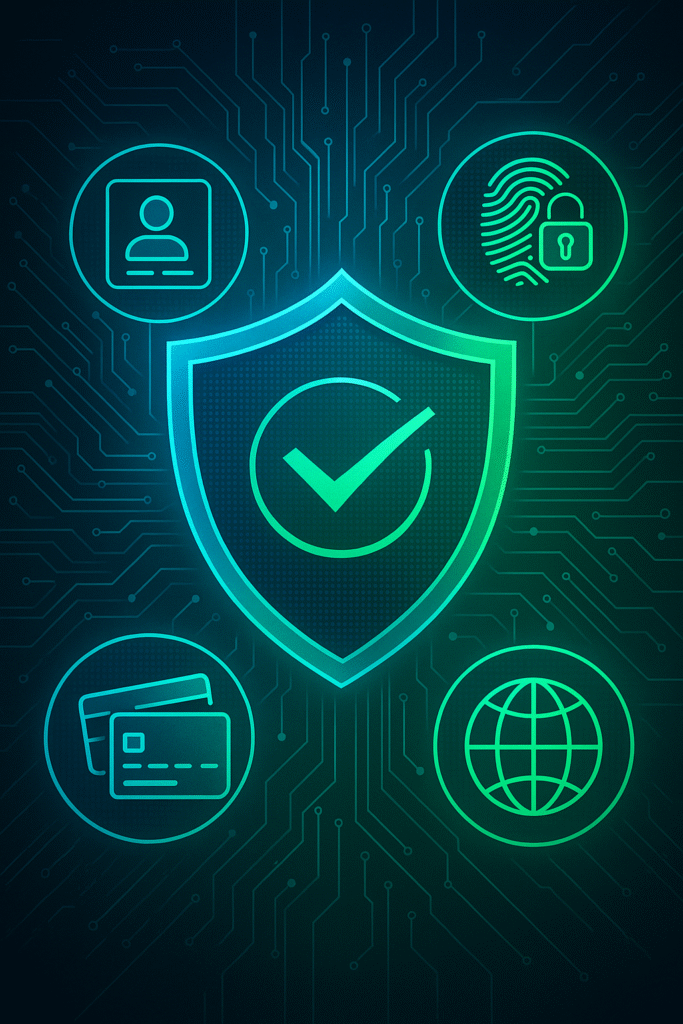
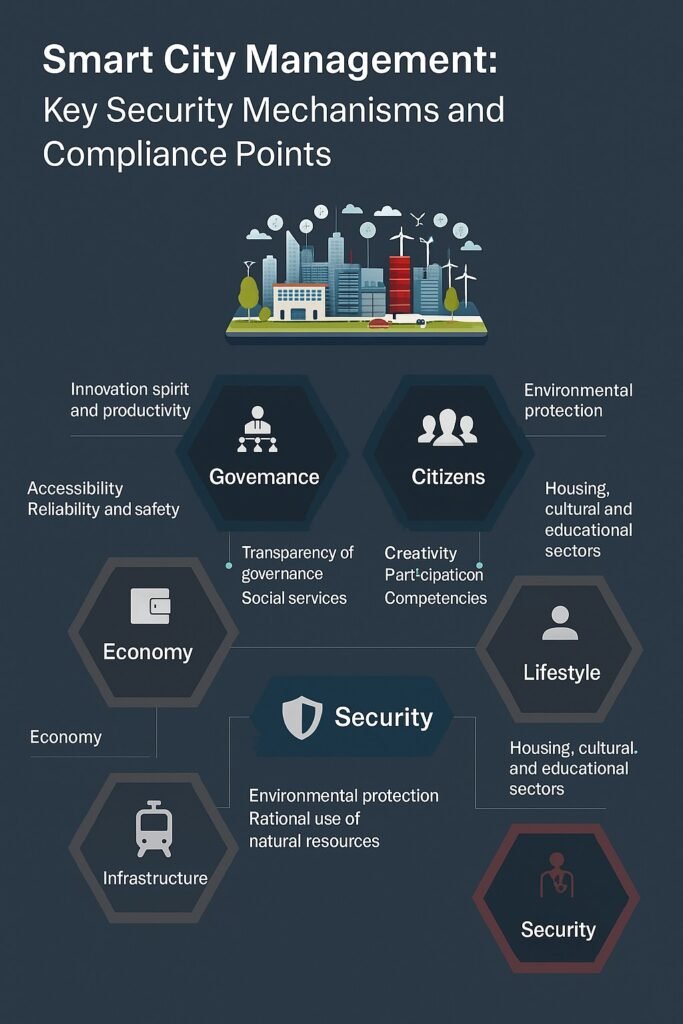
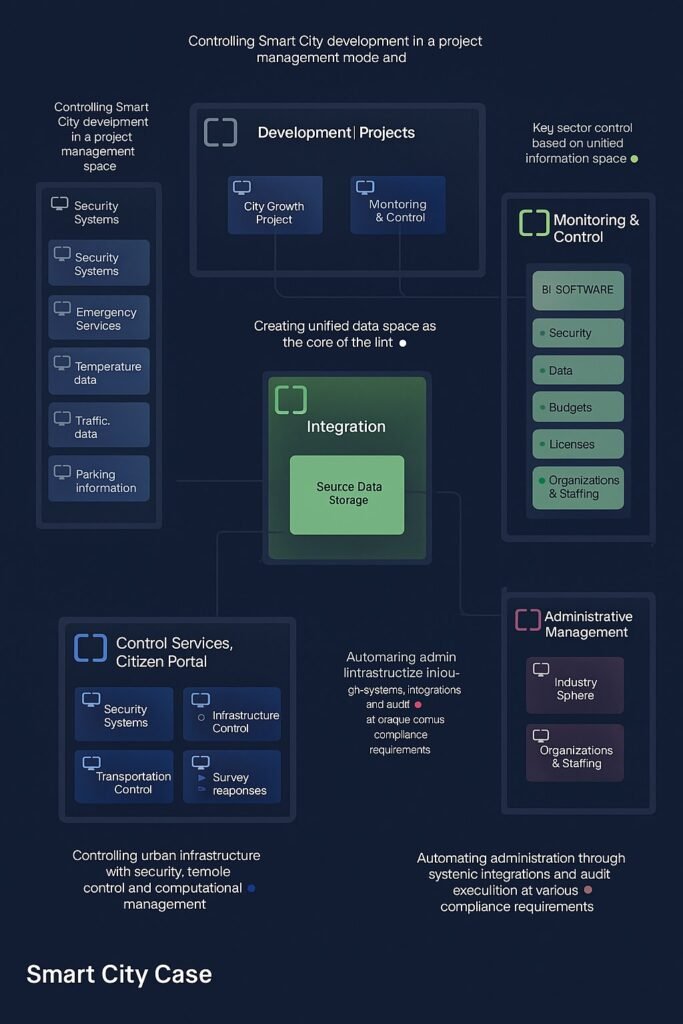
🏙️ Project Overview
The Smart/Intelligent City Project, a strategic initiative successfully implemented by Olga Bunevich at the consortium comprising BS&S and Teleform companies, stands as a testament to our collective success. This ambitious project aimed at enhancing urban management and citizen services through advanced digital infrastructure.
The Smart/Intelligent City Project represents a state-of-the-art digital urban management platform designed to optimize municipal governance through advanced technologies, real-time analytics, and innovative integration of IoT solutions. Under my strategic guidance, this project aimed to enhance the operational efficiency of urban infrastructure, improve public safety, and foster citizen engagement by establishing a unified, transparent, and adaptable digital environment.
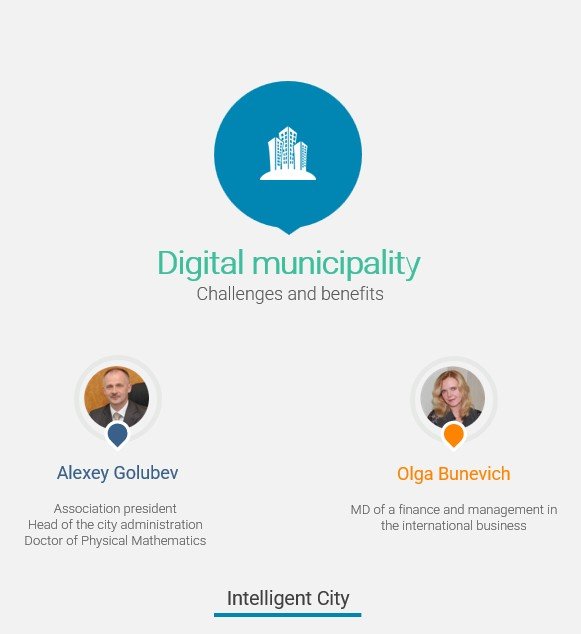
🚩 Key Objectives & Challenges
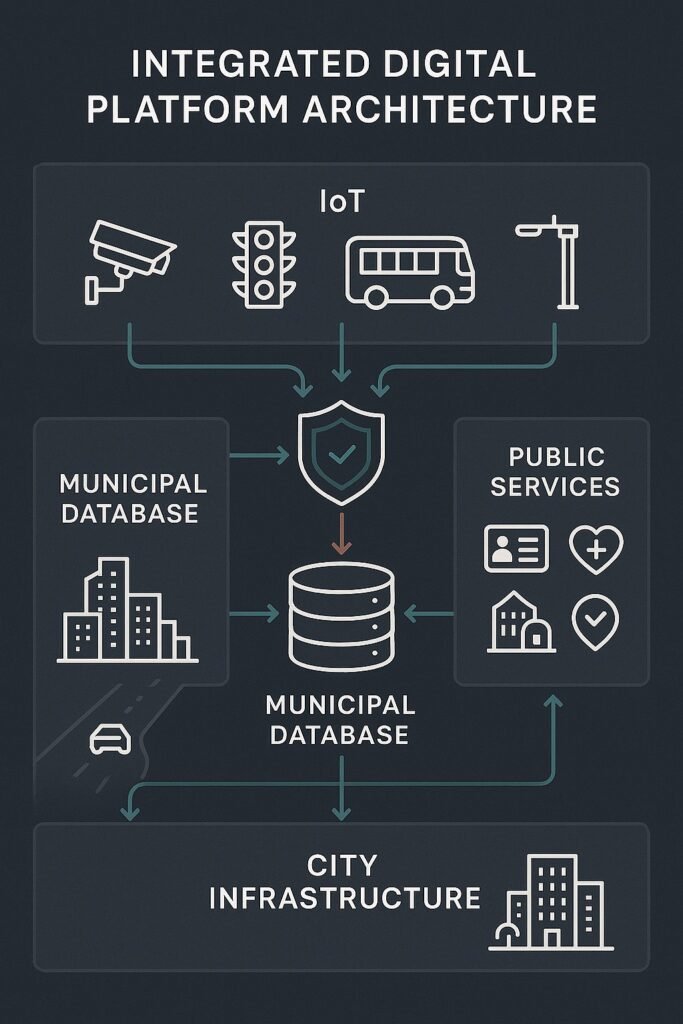
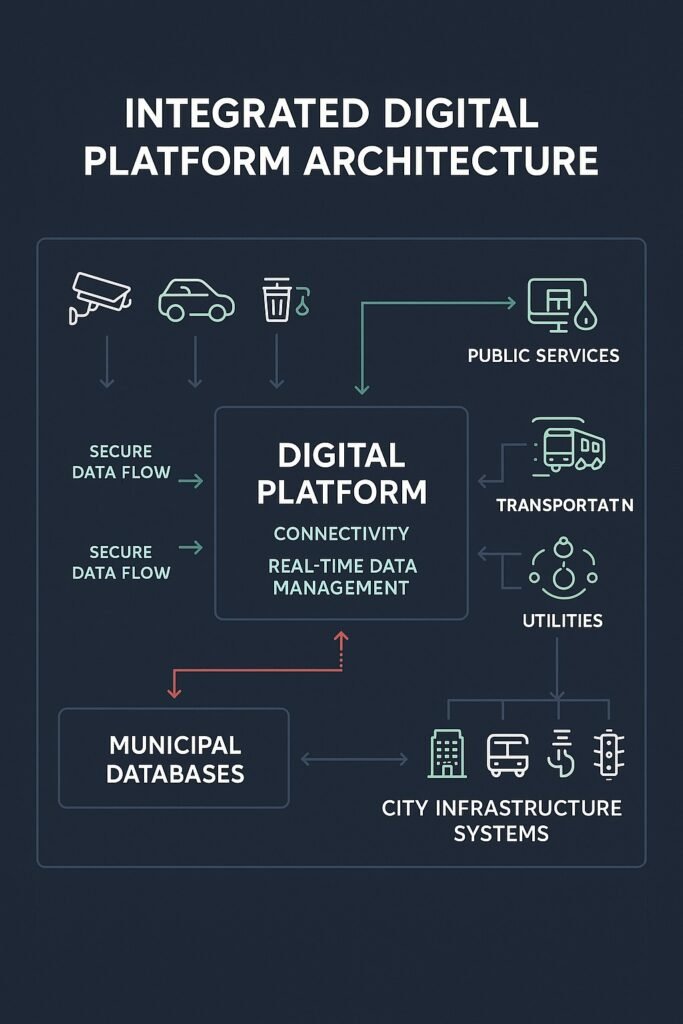
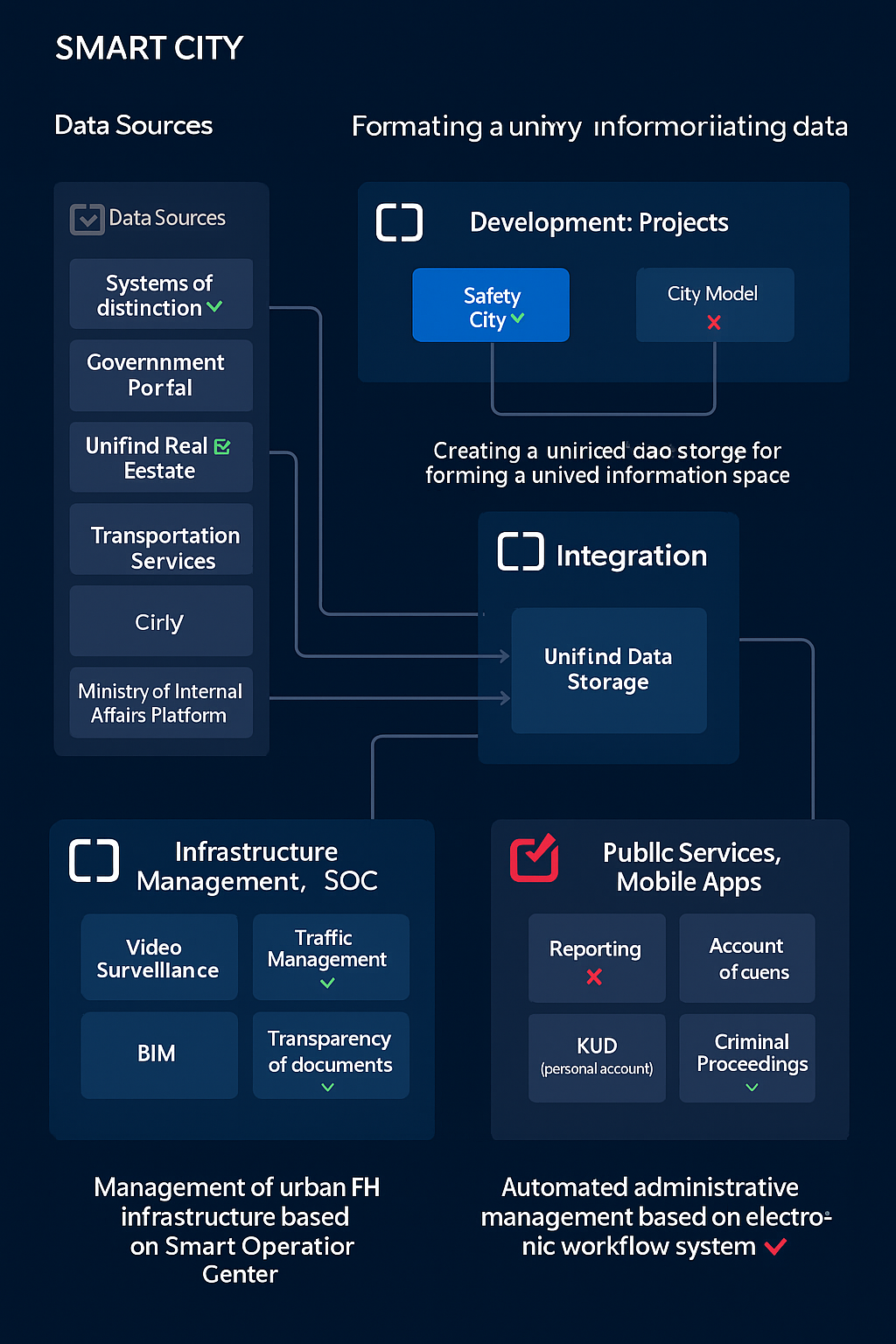
The municipality faced multiple challenges:
- Demographic changes, including aging populations.
- Declining quality of healthcare services.
- Increasing strain on municipal budgets.
- Inefficient, outdated infrastructure.
- Insufficient transparency in governance.
- Economic disparities and reduced business activities.
Enhance Municipal Efficiency: Improve the speed and effectiveness of decision-making processes through real-time monitoring and advanced analytics.
Digital Transparency & Governance: Ensure open and transparent management by integrating digital tools for better citizen engagement and municipal administration.
Infrastructure Modernization: Upgrade aging urban infrastructure with innovative IoT solutions to ensure safety, efficiency, and sustainability.
Security & Safety: Develop comprehensive security protocols and monitoring systems to manage urban safety, infrastructure reliability, and rapid response capabilities.
🔍 Technological Approach & Innovations
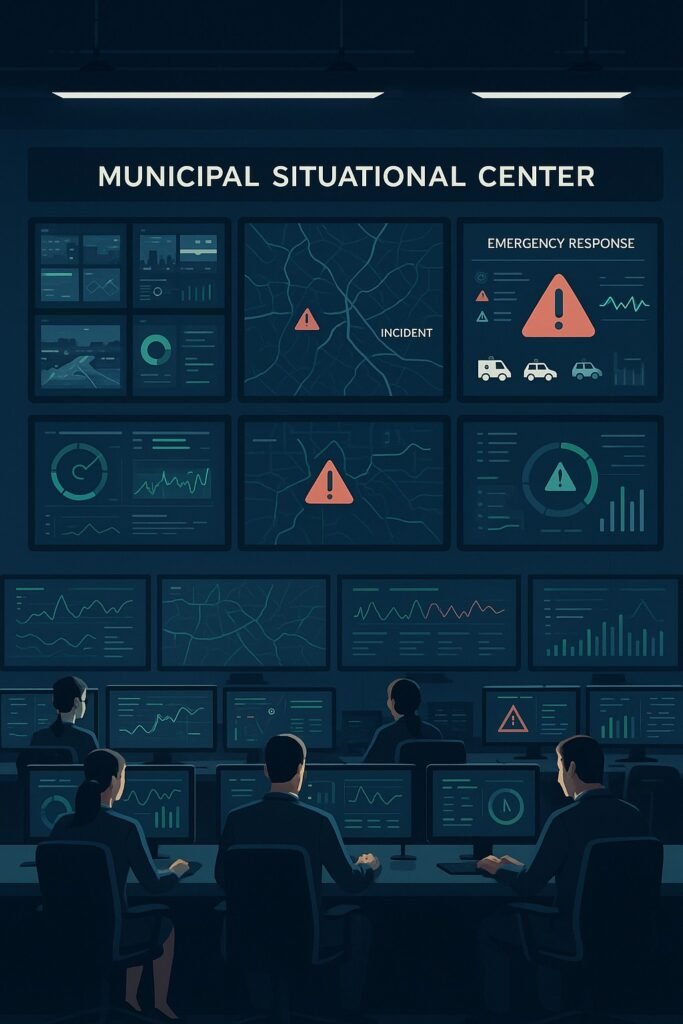
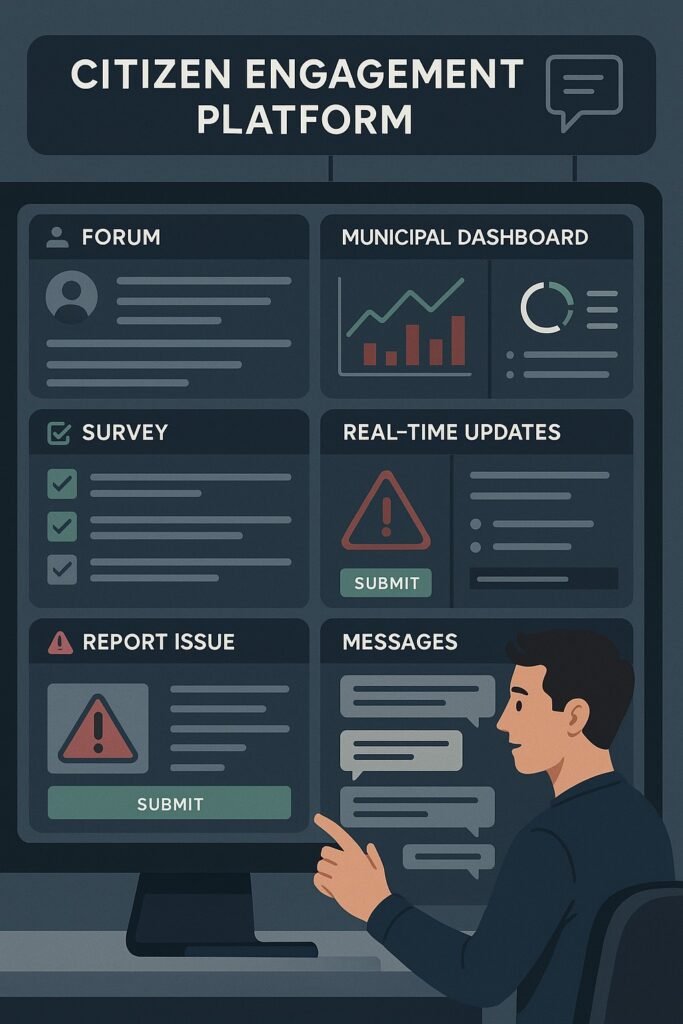
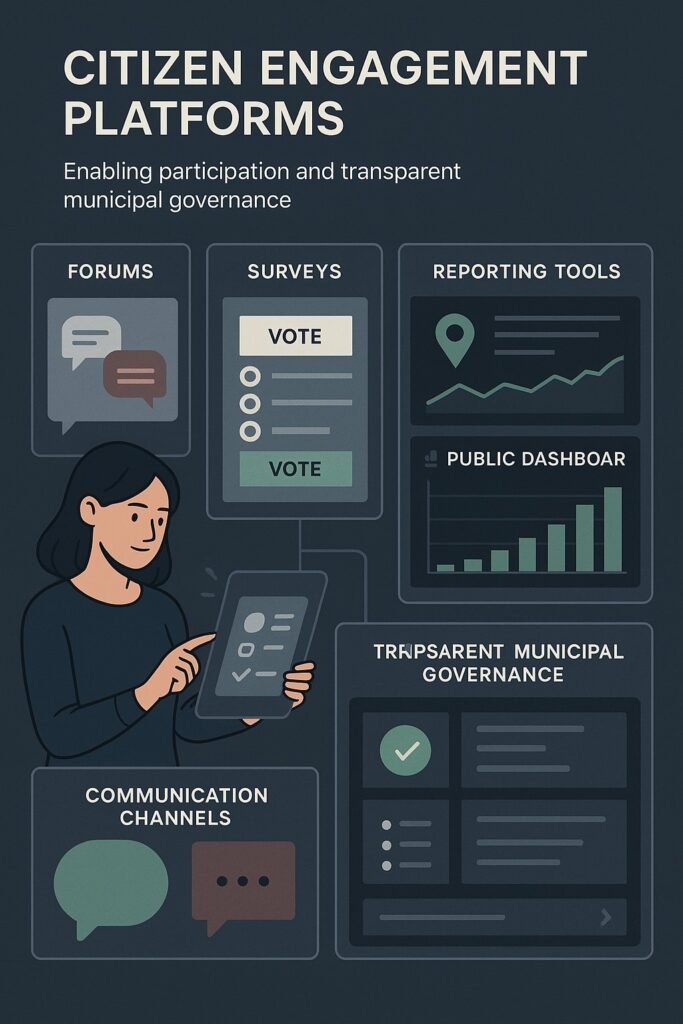
The Intelligent City project sought to resolve these issues by:
- Establishing integrated digital platforms to optimize municipal services.
- Implementing IoT technologies to facilitate real-time monitoring and decision-making.
- Enhancing transparency and efficiency in governmental operations.
- Creating a centralized data repository for better governance.
Integrated Digital Platform: Developed a unified digital management platform integrating various municipal systems, including transportation, utilities, public safety, and citizen services, into a single interconnected environment.
IoT-Based Infrastructure Monitoring: Implemented IoT solutions to provide real-time monitoring and control of urban infrastructure (transport, utilities, public safety systems), ensuring immediate response and predictive maintenance.
Municipal Situational Centers: Established centralized monitoring centers providing comprehensive oversight and real-time response capabilities, enhancing public safety and crisis management.
Advanced Data Analytics & Reporting: Leveraged advanced analytical tools and real-time dashboards to provide actionable insights into urban operations, infrastructure conditions, and public safety.
Interactive Citizen Engagement Platforms: Created digital services for improved interaction between citizens and municipal authorities, providing transparency, convenient access to information, and efficient public services.
🎯 My Leadership Role & Contributions
Directed strategic planning, technological integration, and comprehensive implementation of the Smart City platform.
As the project lead, I successfully negotiated and secured significant stakeholder engagement, which was crucial to the project’s execution and sustainability. My strategic foresight and effective communication facilitated a robust partnership and stakeholder buy-in, ensuring resource availability and project alignment with municipal goals.
Coordinated cross-functional teams, including IT specialists, municipal administrators, and external partners, ensuring alignment with municipal objectives.
Oversaw rigorous quality control, systematic auditing, and continuous improvement initiatives, ensuring reliable system performance and operational excellence.
🏙️ Implementation Highlights
- Developing and deploying an integrated information system unifying various city management services including healthcare, transportation, utilities, and public safety.
- Create a centralized operational support branch, ensuring ongoing maintenance, security, and data integrity.
- Deployment of advanced IoT solutions, enabling real-time data collection, analytics, and actionable insights for urban management.
- Development of interactive visualization dashboards for easy monitoring and decision-making support by municipal authorities.
📊 Results & Measurable Outcomes
- Operational Efficiency: Improved municipal management efficiency by 30% through real-time data analytics, IoT infrastructure monitoring, and streamlined decision-making processes.
- Cost Reduction: Achieved significant cost savings through optimized resource allocation, predictive infrastructure maintenance, and reduced manual processes, saving municipalities up to 20% on annual budgets.
- Successful realization of project investment with payback achieved by stakeholders within the third year of operation.
- Enhanced quality of life and increased citizen satisfaction due to improved service accessibility and responsiveness. Among such articles, we can note:
- Enhanced Public Safety: Implemented advanced surveillance and security systems, significantly reducing response times to emergencies and threats by 40%, and strengthening public confidence.
- Reduction of 2.5 times the average time of a resident on the way from home to work.
- Improvement of urban traffic. Increase in 2-3 times the intensity of public transport. Reduction of traffic by 25-30%.
- Improvement of air pollution indicators, Reduction of pollution by 25%
- Positive economic impact through enhanced investment attractiveness and improved support infrastructure for local businesses.
- Transparency and Citizen Engagement: Improved municipal transparency and citizen participation through digital platforms, leading to increased public trust and engagement in governance processes.
- Sustainability and Environmental Impact: Enhanced environmental sustainability through effective management of resources, innovative transportation solutions, and reduced urban ecological impact.
🏙️Stakeholder Feedback
Key stakeholders highlighted the increased transparency, efficiency, and responsiveness of municipal services as crucial outcomes.
The newly created operational support branch was particularly commended as an essential component ensuring digital infrastructures’ sustainability and continuous improvement.
🚀Achievements for Stakeholders
The Intelligent City project demonstrated the transformative power of integrated digital solutions, positioning the city as a modern, competitive urban environment. Olga Bunevich’s leadership was instrumental in achieving this ambitious vision, delivering lasting value to the city and stakeholders.
🚀 Strategic Importance Conclusion
The Smart/Intelligent City Project has significantly advanced urban governance and operational management through digital transformation and the integration of IoT, positioning municipalities as innovative, efficient, and secure environments. By embracing advanced technologies and analytics, municipal leaders are empowered to manage city operations proactively, fostering sustainable urban growth and significantly enhancing the quality of life for residents.
